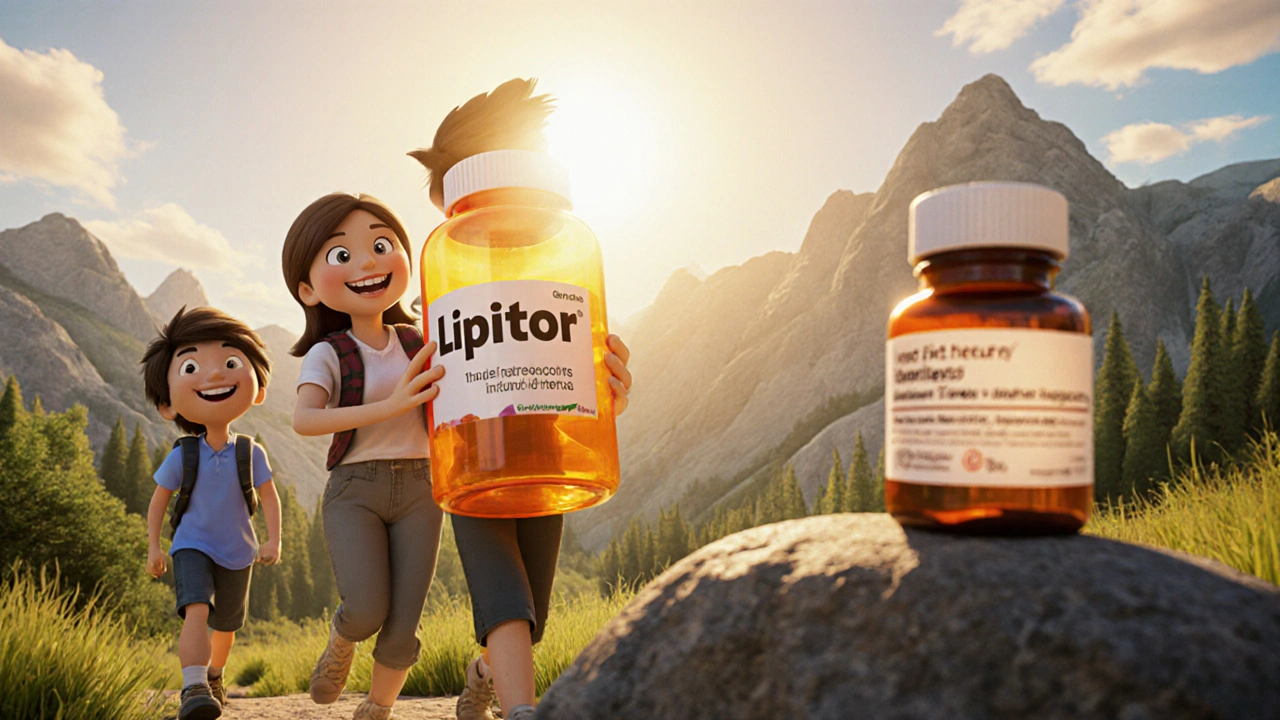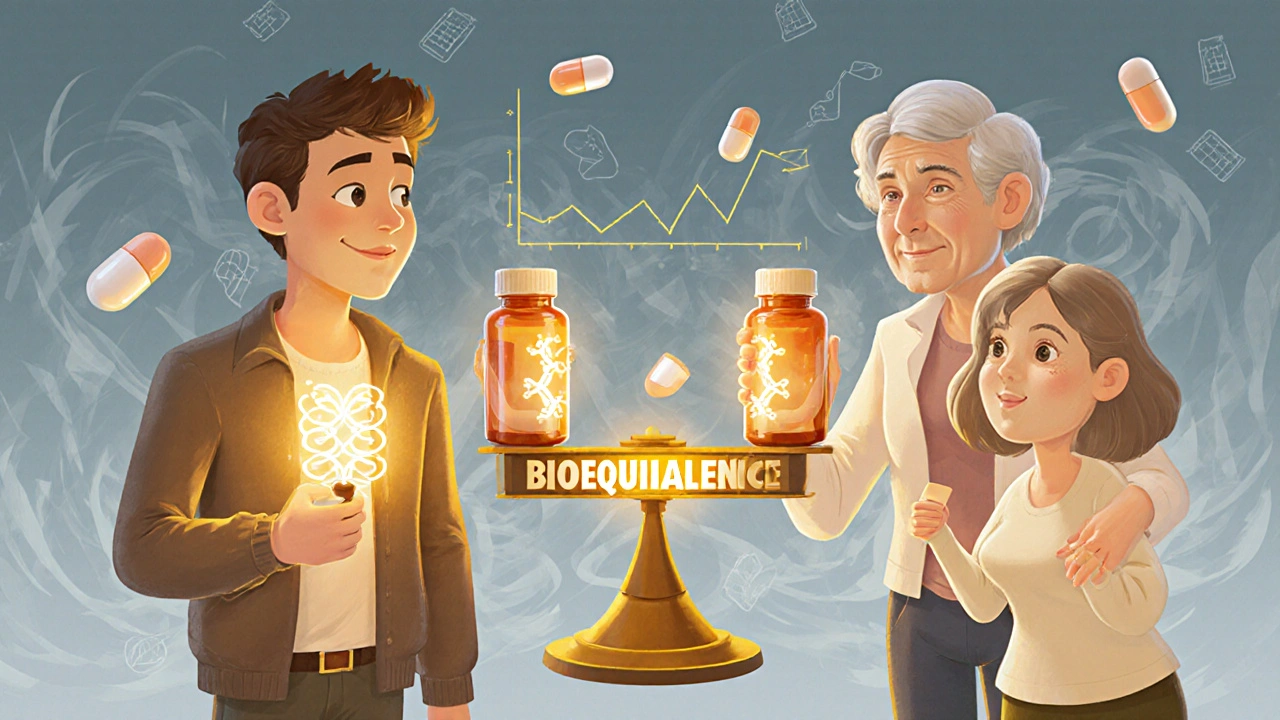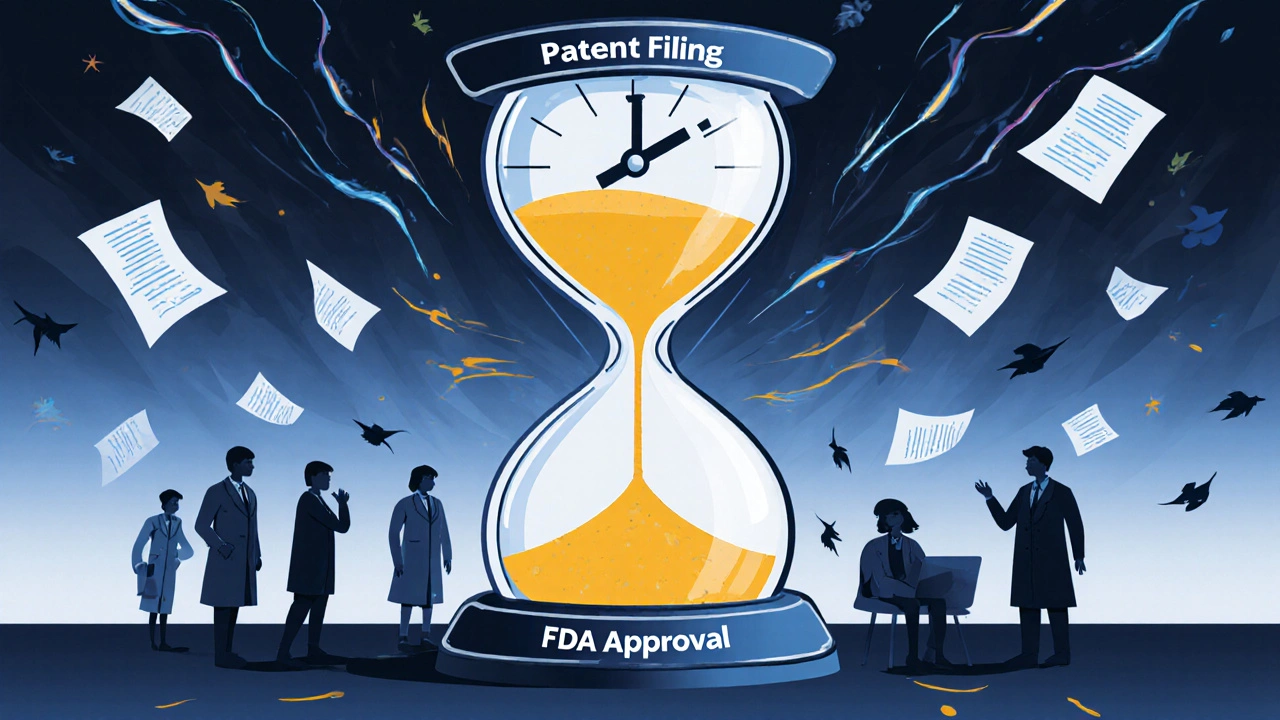When you see a commercial for a new prescription drug, it’s not just selling a pill-it’s shaping what you think about every other option on the shelf. You might not realize it, but those cheerful people hiking in the mountains, laughing with family, and saying, ‘Ask your doctor about Lipitor’ are doing more than promoting a brand. They’re making you believe that the branded version is better, safer, or even more effective than the generic version sitting right next to it at the pharmacy-despite the fact that both contain the exact same active ingredient.
Advertising Doesn’t Just Sell Drugs. It Rewires Expectations.
In the U.S., pharmaceutical companies spent over $6.5 billion on direct-to-consumer (DTC) ads in 2020. That’s more than ten times what they spent in 1996. And it’s working. Research shows that for every dollar spent on these ads, drugmakers get back more than $4 in sales. But here’s the twist: most of that money doesn’t go toward selling the generic version. It goes toward selling the brand-name drug-usually the newer, more expensive one.
When patients see an ad for a branded drug like Lipitor, they don’t just ask for Lipitor. They ask for ‘that cholesterol medicine.’ And when they do, doctors often prescribe the generic version-atorvastatin-because it’s cheaper and just as effective. That’s called the ‘spillover effect.’ Advertising for branded drugs ends up boosting overall use of the entire drug class, including generics. So, on the surface, it looks like advertising helps generics too.
But that’s not the whole story.
Patients Want the Brand. Doctors Often Give In.
Here’s what really happens: when patients walk into a doctor’s office asking for a specific branded drug they saw on TV, the doctor feels pressure to comply. A study from the University of Montana found that physicians filled 69% of patient requests for treatments they believed were inappropriate. That means nearly seven in ten times, a patient’s request-driven by an ad-overruled the doctor’s clinical judgment.
And it’s not just about cost. It’s about perception. Ads use emotion, imagery, and storytelling to make you feel like the branded drug is the ‘premium’ choice. You see happy people living full lives. You hear soothing music. You see slow-motion shots of sunlight through trees. Meanwhile, the generic version? No ad. No story. Just a small label on the bottle.
That’s not an accident. Pharmaceutical companies design ads to create an emotional association with their brand. They don’t want you thinking about chemical equivalence. They want you thinking about quality, trust, and superiority.
Generics Are Just as Good. But Ads Make You Doubt It.
Let’s be clear: generic drugs are not cheaper because they’re worse. They’re cheaper because the patent expired. The FDA requires generics to have the same active ingredient, strength, dosage form, and route of administration as the brand-name drug. They must also meet the same strict standards for purity and performance.
Yet, patients who’ve seen ads for branded drugs often believe generics are ‘weaker’ or ‘less reliable.’ A 2005 JAMA study showed that when standardized patients asked doctors for a specific branded antidepressant, they received the drug 87% of the time-even when the doctor would have normally prescribed a generic. When patients didn’t mention a drug at all, doctors prescribed generics in 63% of cases.
The difference? The ad created a demand. And demand changed the outcome.
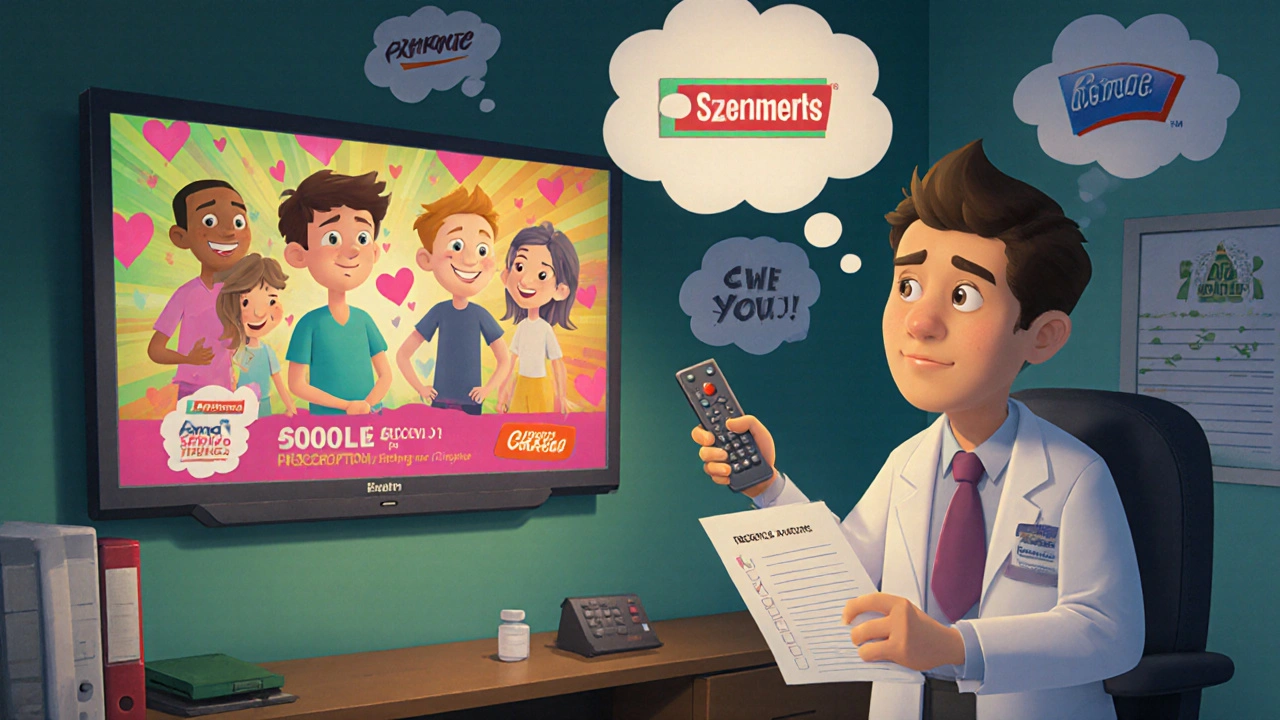
Ads Don’t Teach. They Distort.
Pharmaceutical ads are required by the FDA to mention risks. But here’s the catch: they spend 80% of the time talking about benefits and only 20% on side effects. And even then, the risks are often buried under fast-talking voices and distracting visuals.
A 2018 FDA study found that even after watching an ad four times, most people still couldn’t accurately recall the risks. Benefit information stuck a little better-but not much. Meanwhile, the generic drug? It doesn’t get an ad. So patients never hear about its safety record, its effectiveness, or how millions of people use it every day without issue.
It’s not misinformation. It’s selective storytelling. And it’s enough to make people think the branded version is the only ‘real’ option.
Advertising Increases Use-But Not Adherence
One of the most surprising findings from Wharton’s research is this: while advertising increases the number of prescriptions written, it doesn’t make people take their meds more consistently. In fact, people who start taking a drug because of an ad are less likely to stick with it over time.
For every 10% increase in advertising exposure, adherence among existing patients only went up by 1% to 2%. But among new patients-those who started treatment because of an ad-adherence was lower than average. Why? Because they weren’t motivated by a real need. They were motivated by a 30-second TV spot.
That’s a problem. It means more prescriptions are being written, more money is being spent, but health outcomes aren’t improving. And generics? They’re still the most cost-effective option. But if patients don’t believe in them, they won’t take them-even when prescribed.
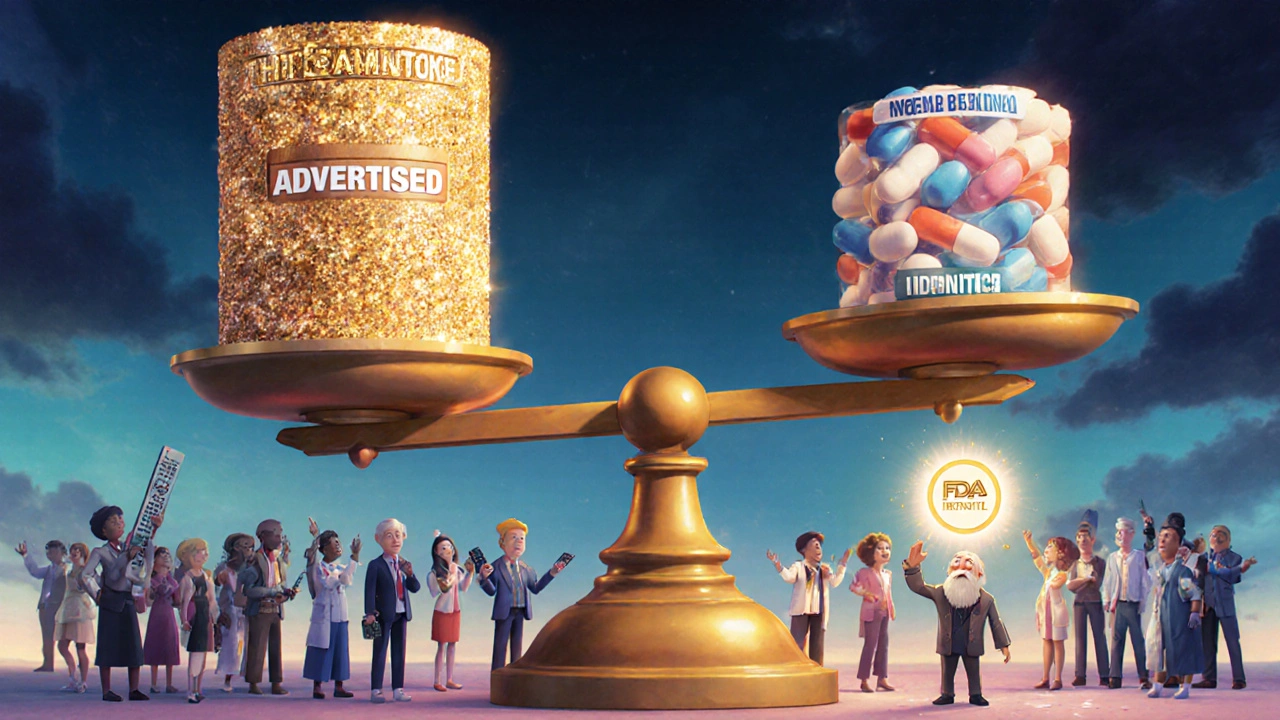
Why This Matters Beyond the Pharmacy
This isn’t just about pills. It’s about how marketing shapes our trust in medicine. When we’re conditioned to believe that branded equals better, we start applying that logic to everything. Why is the generic pain reliever ‘less effective’? Why does the store-brand insulin ‘feel different’? These aren’t medical questions-they’re psychological ones.
And the system benefits from that confusion. Drugmakers spend billions on ads not because they’re trying to educate patients. They’re trying to create preference. And preference drives profit.
Meanwhile, generic manufacturers can’t afford to run TV ads. They don’t have the budget. They don’t have the marketing team. And they don’t need to-because their product is identical. But in a world where perception drives behavior, silence is a disadvantage.
What Can You Do?
When you see a drug ad:
- Ask yourself: ‘Is this drug actually right for me-or just the one they’re selling?’
- Ask your doctor: ‘Is there a generic version? Is it right for me?’
- Remember: the FDA doesn’t approve brands. It approves active ingredients. And generics meet the same standard.
- Don’t assume a higher price means better results. In most cases, it just means better advertising.
Generics save the U.S. healthcare system an estimated $313 billion every year. That’s billions of dollars that could go toward real care-screenings, therapy, preventive services. But if advertising keeps convincing people to choose the more expensive option, those savings disappear.
The next time you’re handed a prescription, look at the name. If it’s a brand you’ve seen on TV, ask if the generic is available. You might be surprised how often the answer is yes-and how little difference it makes in how you feel.
Are generic drugs really as effective as brand-name drugs?
Yes. The FDA requires generic drugs to have the same active ingredient, strength, dosage form, and route of administration as the brand-name version. They must also meet the same strict standards for purity, performance, and bioequivalence. In fact, many generic drugs are made in the same factories as the brand-name versions. The only differences are in inactive ingredients like fillers or dyes-which don’t affect how the drug works.
Why do doctors sometimes prescribe the brand-name drug even when a generic is available?
Often, it’s because the patient asked for it. Studies show that when patients request a specific brand they saw on TV, doctors comply in the majority of cases-even if they believe the generic would be just as effective. Patient requests carry a lot of weight, especially when they’re backed by emotional advertising. Sometimes, doctors may also prescribe the brand if they believe the patient is more likely to stick with it, though research shows the opposite is often true.
Do pharmaceutical ads actually improve patient health?
The evidence is mixed. Ads do increase the number of prescriptions written, which can help people who were previously untreated. But they also lead to overprescribing-especially for people who don’t need the drug. Research shows that while advertising increases drug use, it only slightly improves adherence, and patients who start treatment because of ads are less likely to keep taking their medication long-term. The net effect on health outcomes is minimal, while costs rise significantly.
Why are direct-to-consumer drug ads allowed only in the U.S. and New Zealand?
Most countries ban direct-to-consumer advertising for prescription drugs because regulators believe it leads to inappropriate demand, misinformed patients, and higher healthcare costs. The U.S. and New Zealand are the only two countries that allow it, largely due to First Amendment protections in the U.S. and a long-standing regulatory tradition in New Zealand. Critics argue these ads prioritize profit over public health, while supporters claim they help raise awareness about underdiagnosed conditions.
Can I ask my doctor to prescribe a generic drug even if I saw an ad for the brand?
Absolutely. You have the right to ask for the most cost-effective option. Say something like, ‘I saw an ad for [brand name], but I’d like to know if there’s a generic version that works the same way.’ Most doctors will be happy to discuss it. In fact, many prefer prescribing generics because they’re just as effective and help reduce out-of-pocket costs for patients.
Do generic drugs have more side effects than brand-name drugs?
No. Generic drugs must meet the same safety and effectiveness standards as brand-name drugs. Side effects come from the active ingredient, which is identical in both. Differences in inactive ingredients (like dyes or fillers) can rarely cause minor reactions in sensitive individuals, but these are uncommon and not related to the drug’s effectiveness. If you’ve had a reaction to a brand-name drug, it’s still safe to try the generic-unless your doctor advises otherwise.
